MOJ
eISSN: 2374-6920


Review Article Volume 5 Issue 6
1Department of Biotechnology, Bapuji Institute of Engineering and Technology, India
2Savi Easy Life, Czech Republic
Correspondence: Ir. Sreenivas Reddy Bathula, Department of Biotechnology, Bapuji Institute of Engineering and Technology, Davanagere - 577004, Karnataka, India, Tel 920000000000
Received: May 01, 2016 | Published: June 22, 2017
Citation: Bathula ISR, Virupakshi, Mali H. 3D printing for foot. MOJ Proteomics Bioinform. 2017;5(6):165-169. DOI: 10.15406/mojpb.2017.05.00176
The 3-Dimensional (3D) printing also known as additive manufacturing (AM). Technology in manufacturing sector has a great potential to fabricate 3D constructs with complex geometries, elaborated textures and tailored contents. For this reason, 3D technology is driving major innovations in manufacturing industry. A three dimensional object is created by laying down successive layers of material. This review focused on the use of 3D printing techniques to design new foot for disabled and foot pain relief soles for elderly people. During the complications like diabetes, accidents, diseases, war and birth defects structure of foot may vary or sometimes entire foot needed to be removed. Such people will have hard time while walking.1 Some of those will go for peg-leg. Using current 3D printing technology new foot for disabled persons and foot pain relief can be done. Our discussion brings the application of 3D printing techniques into footwear manufacturing and material design. Computer Aided Design (CAD) used for engineering of 2D and 3D models drawings of physical components. In this way 3D printing technology can revolutionize the design of footwear for sports and disabled people.
3D printing long ago moved from being theoretical to a reality, and in these days 3D printers are cheaper to produce. Several models are now available for sale, as well as designs for products. Experts predict 3D printers will be common in homes in coming years. Technology evolved behind 3D printers, from the past to present. Now many things can be made using 3D printers, those will give us wide range of services in manufacturing practical objects for everyday use. The commercial products parts used in manufacturing and human parts for medical purposes holds promise for bio printing. 3D printing or additive manufacturing is likely to revolutionize business in the next few years. It often dismissed in the popular mindset as a tool for home-based “makers” of toys and trinkets. The technology is gaining momentum in large-scale industry, already it has moved well beyond prototyping. It is increasingly be used to produce high-volume parts and products in several industries. It is a form of additive manufacturing technology where a three dimensional object is created by laying down successive layers of material. It is also known as rapid prototyping. 3D printing is a mechanized method where by 3D objects are quickly made on a reasonably sized machine connected to a computer containing blueprints for the object.
The 3D printing concept to custom manufacturing is exciting to nearly everyone. This revolutionary method for creating 3D models with the use of inkjet technology saves time and cost by eliminating the need to design print and glue together separate model parts. Now, we can create a complete model in a single process using 3D printing. The basic principles include materials, cartridges, flexibility of output, and translation of code into a visible pattern. 3D printers are machines that produce physical 3D models from digital data by printing layer by layer. It can make physical models of objects either designed with a CAD program or scanned with a 3D scanner. It is used in a variety of industries including jewelry, footwear, industrial design, architecture, construction, automotive, aerospace, education, dental, medical industries, and consumer products.1
The technology for printing physical 3D objects from digital data was first developed by Charles W. Hull in 1984. He named the technique as Stereo lithography and obtained a patent for the technique in 1986. While Stereo lithography systems had become popular by the end of 1980s, other similar technologies such as Fused Deposition Modeling (FDM) and Selective Laser Sintering (SLS) were introduced in 1993. Massachusetts Institute of Technology (MIT) patented another technology, named "3 Dimensional Printing Techniques" which is similar to the Inkjet technology used in 2D Printers. In 1996, three major products, Genesis from Stratasys, Actual 2100 from 3D Systems and Z402 from Z Corporation, were introduced.
In 2005, Scarp Launched breakthrough product, named Spectrum Z510, which was the first high definition color 3D Printer in the market. Another breakthrough in 3D Printing occurred in 2006 with the initiation of an open source project, named RepRap, which was aimed at developing a self-replicating 3D printer.2–8
Very large scale integration (VLSI) design has become a complex undertaking that involves a variety of activities and the use of a large, diverse set of CAD tools. During the course of design many data files are generated and the designer is faced with the immense task of keeping track of myriad details. In order to make the design process itself more tractable, CAD frameworks have been developed. The purpose of these frameworks, from the user's point of view, has been to provide basic mechanisms for tool and data management. A few frameworks also provide some higher level facilities to help designers manage the design processes. In general, CAD tools are developed as a means for performing specific design functions or CAD tasks (e.g. synthesis, verification and optimization).
CAD tasks constitute the design management abstraction to be implemented in a framework. At CAD task level, the semantics of specific design functions are actually modeled and represented. Independent of specific CAD resources CAD task manger dynamically maps them. The designer interacting with the framework at the CAD task level is allowed to request execution of abstract tasks. Working at the CAD task level relieves designers from low level details concerned with CAD tool invocation. CAD task manager provides a CAD framework with the capability to perform design functions irrespective of the actual reason. So, designers interacting with the framework directly at the CAD task level are still required to map the design problems.9
The human foot is a strong and complex mechanical structure containing 26 bones, 33 joints (20 of which are actively articulated), and more than a hundred muscles, tendons, and ligaments. The joints of the foot are the ankle and subtler joint and the inter phalange articulations of the foot. The human foot is incredibly complex in its structures and function. The foot anatomy and physiology make us aware of some common sports injuries, such as fractures, ankle sprains, and plantar fasciitis.
The forefoot includes the five metatarsal bones, and the phalanges (the toes). The first metatarsal bone is the shortest, thickest and plays an important role during propulsion (forward movement). It also provides attachment for several tendons. The second, third, and fourth metatarsal bones are the most stable of the metatarsals. They are well protected and have only minor tendon attachments and are not subjected to strong pulling forces. Near the head of the first metatarsal, on the plantar surface of the foot, are two seamed bones (a small, oval-shaped bone which develops inside a tendon, where the tendon passes over a bony prominence) they are held in place by tendons, and ligaments (Figure 1).11
Foot and toe movements take place at the joints. These joints are capable of motion in two directions: plantar flexion and dorsiflexion. In addition, the joints permit abduction of the toes. The foot as a whole has two movements: inversion and aversion. All the joints of the hind foot and mid foot contribute to these complex movements that are ordinarily are combined with movements at the ankle joint.
The foot has two important functions: weight bearing and propulsion. These functions require a high degree of stability. In addition, the foot must be flexible, so it can adapt to uneven surfaces. The multiple bones and joints of the foot give it flexibility, but these multiple bones must form an arch to support any weight, the foot has three arches. The medial longitudinal arch is the highest and most important of the three arches. The arches of the foot are maintained not only by the shapes of the bones as well as by ligaments. In addition, muscles and tendons play an important role in supporting the arches.12
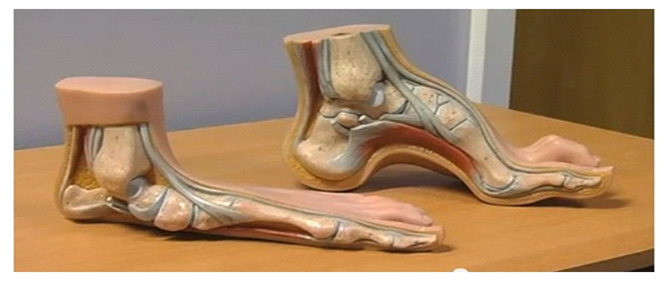
Figure 1 Foot anatomy picture explains arches of the foot.13
Stereo lithography
3D printers (known as SLAs or Stereo Lithography Apparatus) position a perforated platform just below the surface of a vat of liquid photo curable polymer. A UV laser beam then traces the first slice of an object on the surface of this liquid, causing a very thin layer of photo polymer to harden. The perforated platform is then lowered very slightly and another slice is traced out and hardened by the laser. Another slice is then created, and then other, until a complete object has been printed and can be removed from the vat of photo polymer, drained of excess liquid, and cured (Figure 2).
Fused deposition modeling (FDM)
Fused deposition modeling is an additive manufacturing technology commonly used for modeling, prototyping, and production applications. It is one of the techniques used for 3D printing. FDM works on an "additive" principle by laying down material in layers; a plastic filament or metal wire is unwound from a coil and supplies material to produce a part. The technology was developed by S. Scott Crump in the late 1980s and was commercialized in 1990. The term fused deposition modeling and its abbreviation to FDM are trademarked by Stratasys Inc. The exactly equivalent term, fused filament fabrication (FFF), was coined by the members of the Rep Rap project to give a phrase that would be legally unconstrained in its use. It is also sometimes called Plastic Jet Printing (PJP). Here a hot thermoplastic extruded from a temperature-controlled print head to produce fairly robust objects to a high degree of accuracy (Figure 3).2
Selective laser sintering (SLS)
This builds objects by using a laser to selectively fuse together successive layers of a cocktail of powdered wax, ceramic, metal, nylon or one of arrange of other materials. Objects printed with SLS are made with powder materials, most commonly plastics, such as nylon, which are dispersed in a thin layer on top of the build platform inside an SLS machine. A laser, which is controlled by a computer that tells it what object to "print," pulses down on the platform, tracing a cross-section of the object onto the powder. The laser heats the powder either to just below its boiling point (sintering) or above its boiling point (melting), which fuses the particles in the powder together into a solid form. Once the initial layer is formed, the platform of the SLS machine drops usually by less than 0.1mm exposing a new layer of powder for the laser to trace and fuse together. This process continues again and again until the entire object has been printed. When the object is fully formed, it is left to cool in the machine before being removed.3,16
Multi-jet modeling (MJM)
This again builds up objects from successive layers of powder, with an ink jet-like print head used to spray on abider solution that glues only the required granules together.3
The V flash printer
It is manufactured by Canon, is low-cost 3D printer. It’s known to build layers with a light-curable film. Unlike other printers, the V Flash builds its parts from the top down.3
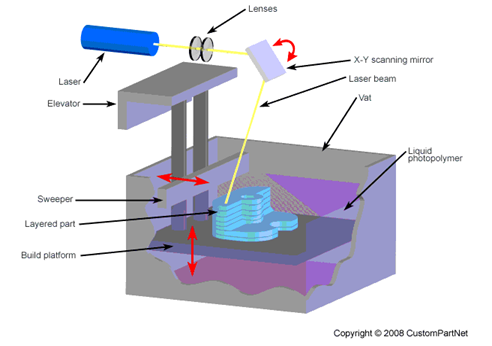
Figure 2 Stereo Lithography Apparatus.14
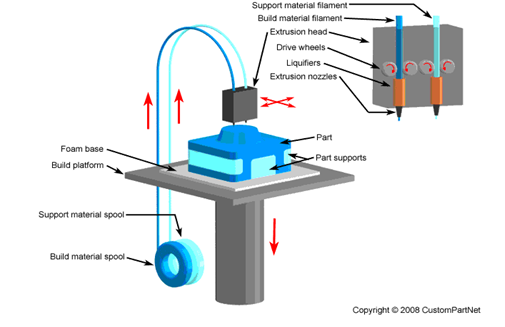
Figure 3 Fused Deposition Modeling Apparatus.15
Sometimes foot needed to be removed due to diabetes, accidents, diseases and birth defects. Such people will have hard time while walking. Some of those will go for peg-leg. In India the estimated population of people who are managing amputation is approximately 74, 55,494 and 23,500 are added every year.4,5 The chance of lower-extremity amputations rate for people with diabetes is high (5.5 per 1,000 people).6 Our idea is to design 3D-printed foot that could replace the lost one and won’t let the people down.
The majority of adaptive sports programs are non-profit organizations, making it difficult for them to afford to purchase high- cost equipment for sports participants with disabilities. Also, several adaptive sports equipment it seems need to be custom fitted to the participant, making it impossible to recycle equipment from one participant to the next. Because of this, participants generally use their own money to buy the necessary equipment to allow them to participate in sports, as medical insurance rarely covers these types of items.
We need to scan the healthy leg of a person and create a mirror image of the needed to be replaced.
The below given steps to be followed to create a 3D model.
The created model uploaded to the Delta like 3D printer machine. Medical grade silicone will be used in 3D-printing as material to prepare flexible foot. Ex: We already know the 3D-printed duck foot, dolphin tail and dog legs.7,8
The Anderson Strategy Group, Sports and Social Change have recently collaborated in a 14-week research study exploring the possible impact of 3D printing on the design. The development and manufacturing of high-cost adaptive sports equipment for people with disabilities, including prosthetics, sports wheelchairs, and other devices that create greater access to sports participation for people that have physical disabilities. The Anderson Strategy Group is a student run organization at the UCLA Anderson School of Management that focuses on developing strategic solutions to business problems. The group conducted over 1000 hours of research and interviews stakeholders across 21 countries to get a good idea of the global challenge of high cost adaptive sports equipment and how 3D printing might make a big difference in making sports participation accessible for people with disabilities. Some examples of the adaptive sports equipment included in this study are wheel chairs for basketball, tennis and racing, mono/sit-skis, hand cycles and a range of active-use prosthetics. Consumer and cost analysis were conducted that focused on 3D printing companies, adaptive sports equipment manufacturers and athletes with a wide range of physical disabilities.17
The personalized souls can be used for foot pain relief. The soul of shoes is created in such a way to decrease the pain of the foot, by calculating the weight of person and pressure distribution on various parts of foot. Like protein-protein interactions in molecular biology, that there will be an interaction between foot and soul. By understanding this interaction there is a chance to get relief from foot pain. So many people are using drugs for their foot pain relief and many of them have side effects, to avoid this type of problem we can use 3D printed soul for foot pain relief. It can also work for the people who have misalignment or unbalanced walk. It is possible through exact calculation of his/her weight and pressure exerted on the floor (Figure 4 & 5).
It is estimated that about 100million Indians suffer from disabled foot and ankle conditions. The 3D designed insoles could help those with impairment and walking difficulties. The 3D printers used to build foot and ankle supports with a new degree of precision. High precision obtained using 3D scanners. For accurate insoles production exact feet of leg measures are required for a perfect fit. The 3D models are easy to store. The design can be modified based on requirement.
A horse has been fitted with a shoe from a 3D printer for what's believed to be the first time in the world. The "horse-thotic" was specifically designed to help combat a foot disease. The apex of that curvature may be different for a different horse. The growing 3D printing field is valuable to solve medical complications like amputation and foot pain. An EU-funded project has developed a way to quickly make customized corrective foot and ankle supports using 3D printers and the results are already in the market.
Around 200million Europeans are estimated to suffer from disabling foot and ankle conditions. Europe’s health services spend over €300million each year treating many of these patients with foot supports, typically worn inside the shoes or as splints. Known as or theses, supports can be mass-produced. Made this way, such supports cannot be easily adjusted to each patient for the most effective treatment, meanwhile, custom-made foot supports work more effectively, though they can be expensive and time consuming to make. Current methods and foot models used to assess a patient can also result in the wrong prescription being made. Patients often have to make repeat visits for corrections to their supports. The EU-funded project “A-FOOTPRINT” has developed a faster, more efficient way to make more effective foot supports customized to each patient.
Project coordinate or Professor Jim Wood burn of Glasgow Caledonian University says the team’s researchers developed innovative foot models, which when combined with computer-aided design and 3D printers allow the manufacture of more accurate foot supports. 3D printing manufacturing technology works by building up thin layers of plastic to create an object, in this case foot supports.
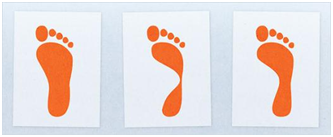
Figure 4 Blue print of foot.10
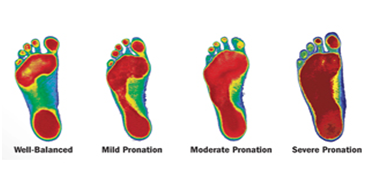
Figure 5 Pressure distribution of foot.10
Creating complete models in a single process using 3D printing has great benefits. This innovative technology has been proven to save companies time, manpower and money. Companies providing 3D printing solutions have brought to life an efficient and competent technological product.
The advent of 3D printing has seen a proliferation of products (designed in digital environments), which involve levels of complexity that simply could not be produced physically in any other way. While this advantage has been taken up by design and artists to impressive visual effect, it has also made a significant impact on industrial applications, whereby applications are being developed to materialize complex components that are proving to be both lighter and stronger than their predecessors. Notable uses are emerging in the aerospace sector where these issues are of primary importance.
3D printing enables quick production of prototypes or small-scale versions of the real object. This helps researchers and engineers plan the actual object and catch any design flaws that may affect quality and functionality.
Since 3D printers can “print” products as and when needed, and does not cost more than mass manufacturing, no expense on storage of goods is required.
Customization is the norm when it comes to 3D printing. With the desired raw material, a 3D printer, and the required blueprint, you can “manufacture” any object you want, with the specifications and design of your choice.18
Although the initial cost of setting up a 3D printing facility may be high, the overall savings in the form of labor costs, time saved, and equal effort for small-scale and mass manufacturing ensures that the cost of production is relatively low.
The long and often traumatic wait for an organ donor could come to an end with advances in bio printing or manufacture of 3D printed organs. Research is on to create bio printers that can create living organs along with the structural lattice for the organ using the patient’s own cells and tissues.19
Disadvantages
When people lost their legs due to an accident or war, patients who experienced diabetes wounds and related amputations, children with polio or birth defects needs orthotic support. Aged people and athletes who suffering with foot pain needs extra care, otherwise due to injuries the whole life of that person becomes inactive. Using 3D printing technology now it’s possible to lead normal life for those people who lost their legs. In this digital foot scanning, computer modeling, 3D printing which helps us to prepare 100% personalized orthotics. 3D printing technology has the capacity to improve the life style of the people. The 3D printing technology innovations in medical and other sectors could increase job opportunities. 3D printing technology assures customized consumer goods of reduced cost and wait time in near future.
None.
The author declares no conflict of interest.

©2017 Bathula, et al. This is an open access article distributed under the terms of the, which permits unrestricted use, distribution, and build upon your work non-commercially.